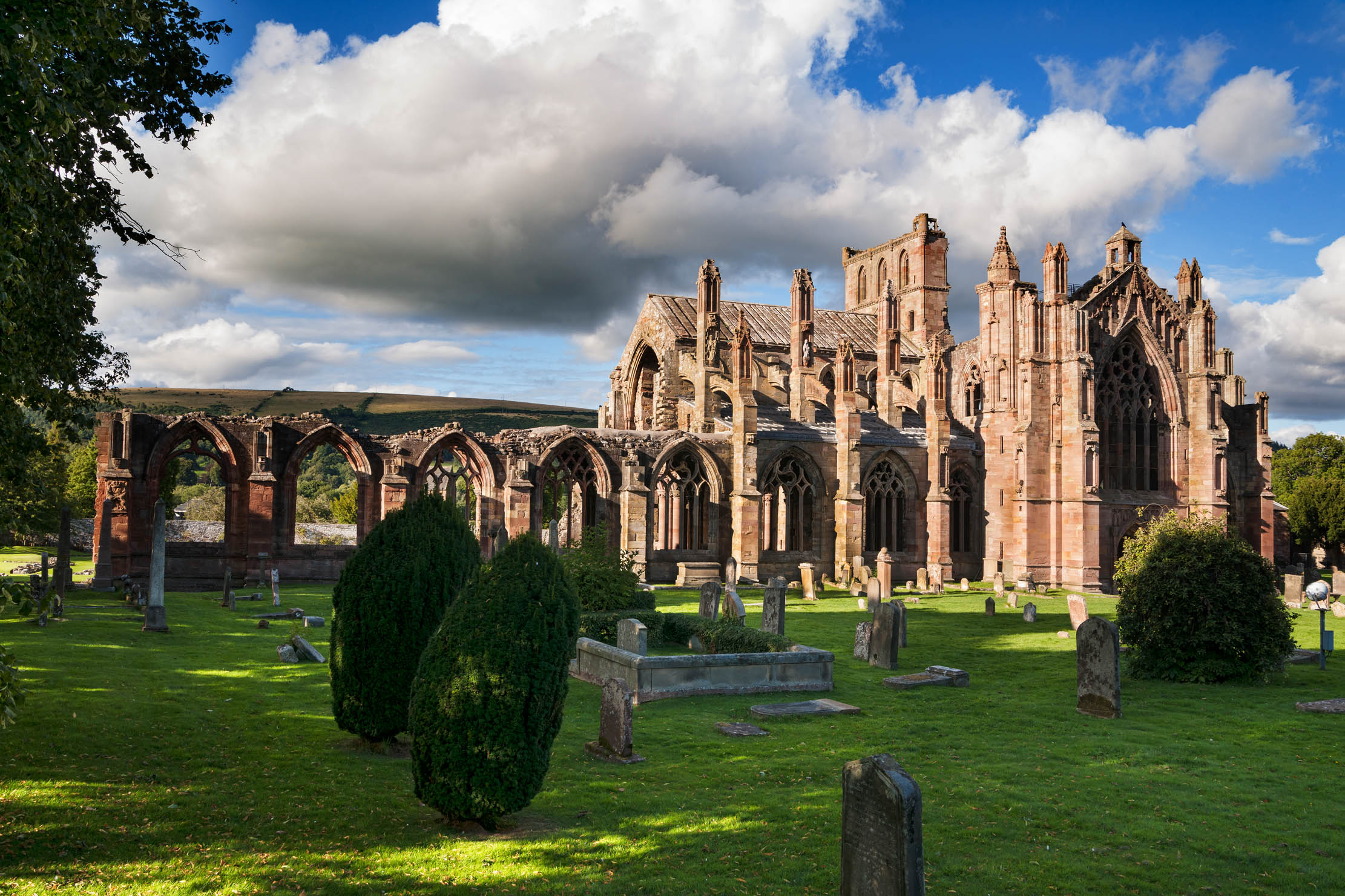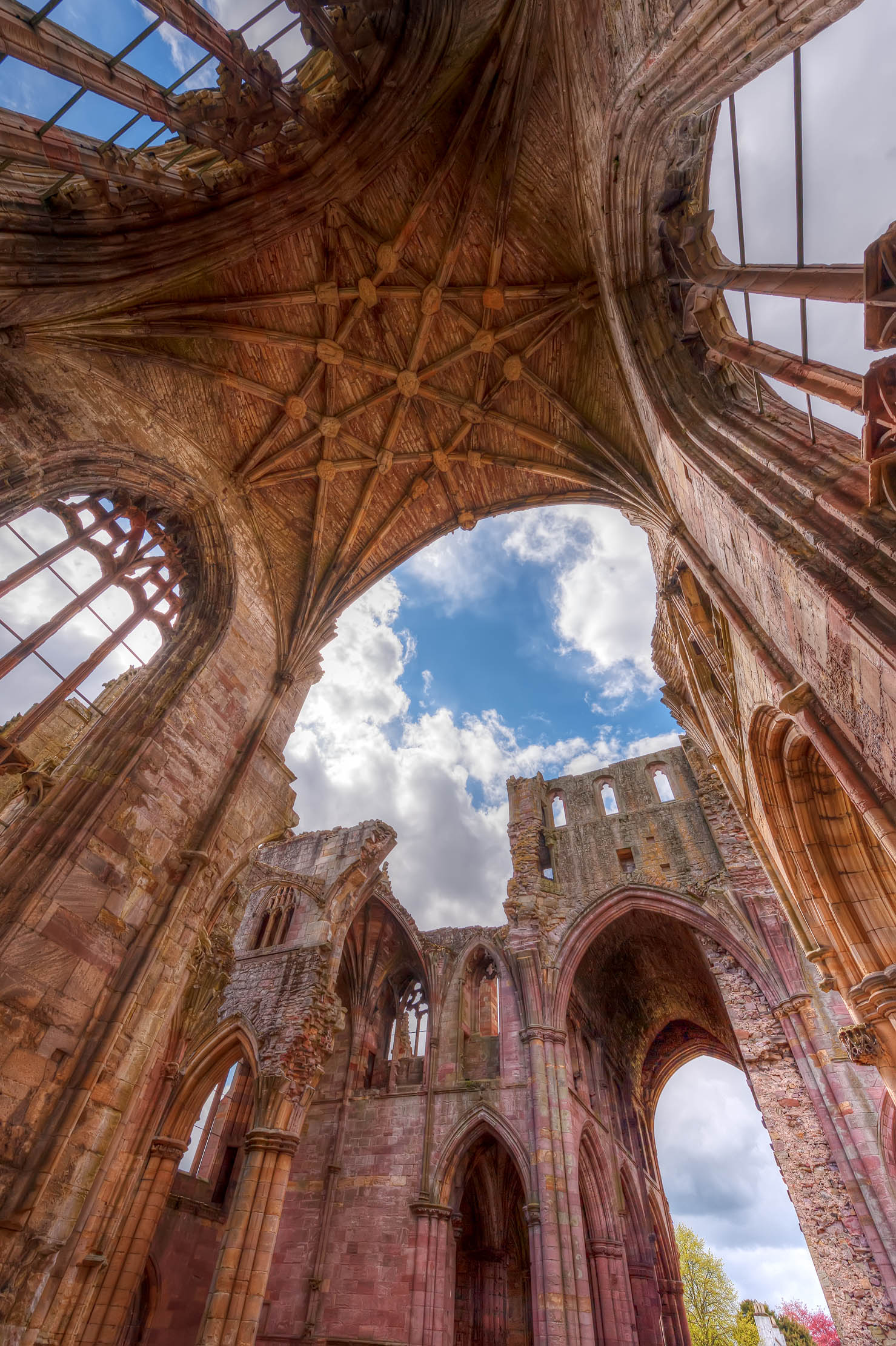
David I of Scotland, having pushed the boundaries of his kingdom far into what is now England, founded monasteries along the Tweed. This was to prove uncomfortable for the monks when the border settled back to its old position, as they were now easy targets for raids.
Melrose suffered repeatedly. It was sacked by Edward II’s army in 1322; Robert the Bruce helped with the rebuilding and ordered that his heart should be buried there (the rest of his body joined the other Scottish kings in Dunfermline Abbey).

After Melrose was burnt by another army (Richard II’s) in 1385, it was almost completely rebuilt on a grand scale. Today, the shell of the abbey church, of rose-coloured stone, largely survives.

Unusually, the mason who led the work is identified by an inscription: he was John Morow, originally from Paris, who had several major buildings in his care, and his carvings show demons, hobgoblins, lute-playing angels, cooks with ladles and a pig playing the bagpipes.

Visitors have been coming here for centuries to appreciate some of Britain's most romantic and spectacular ruins. Queen Victoria paid a visit, while Sir Walter Scott — who lived three miles away at Abbotsford — urged readers of The Lay of the Last Minstrel to visit in moonlight.

How to visit Melrose Abbey
Melrose Abbey, 40 miles south of Edinburgh, is run by Historic Scotland, and is open year-round to visitors (adult tickets £3.80). Sadly, at the time of writing, conservation work means that the church itself is closed off to visitors, but the cloisters, museum and gardens are still open. The Abbey is on the north side of the town centre, and parking is available.
Exquisite houses, the beauty of Nature, and how to get the most from your life, straight to your inbox.
Toby Keel is Country Life's Digital Director, and has been running the website and social media channels since 2016. A former sports journalist, he writes about property, cars, lifestyle, travel, nature.

